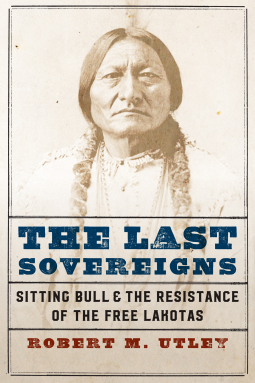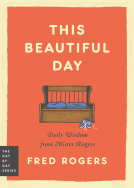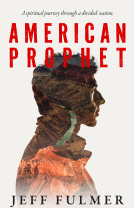
The Last Sovereigns
Sitting Bull and the Resistance of the Free Lakotas
by Robert M. Utley
This title was previously available on NetGalley and is now archived.
Send NetGalley books directly to your Kindle or Kindle app
1
To read on a Kindle or Kindle app, please add kindle@netgalley.com as an approved email address to receive files in your Amazon account. Click here for step-by-step instructions.
2
Also find your Kindle email address within your Amazon account, and enter it here.
Pub Date Oct 01 2020 | Archive Date Oct 30 2020
University of Nebraska Press | Bison Books
Talking about this book? Use #TheLastSovereigns #NetGalley. More hashtag tips!
Description
True West Magazine's 2020 Best Author and Historical Nonfiction Book of the Year
The Last Sovereigns is the story of how Sioux chief Sitting Bull resisted the white man’s ways as a last best hope for the survival of an indigenous way of life on the Great Plains—a nomadic life based on buffalo and indigenous plants scattered across the Sioux’s historical territories that were sacred to him and his people.
Robert M. Utley explores the final four years of Sitting Bull’s life of freedom, from 1877 to 1881. To escape American vengeance for his assumed role in the annihilation of Gen. George Armstrong Custer’s command at the Little Bighorn, Sitting Bull led his Hunkpapa following into Canada. There he and his people interacted with the North-West Mounted Police, in particular Maj. James M. Walsh. The Mounties welcomed the Lakota and permitted them to remain if they promised to abide by the laws and rules of Queen Victoria, the White Mother. But the Canadian government wanted the Indians to return to their homeland and the police made every effort to persuade them to leave. They were aided by the diminishing herds of buffalo on which the Indians relied for sustenance and by the aggressions of Canadian Native groups that also relied on the buffalo.
Sitting Bull and his people endured hostility, tragedy, heartache, indecision, uncertainty, and starvation and responded with stubborn resistance to the loss of their freedom and way of life. In the end, starvation doomed their sovereignty. This is their story.
Advance Praise
“In The Last Sovereigns the greatest biographer of the greatest Lakota leader delivers a superb account of Sitting Bull’s last years, centering on his exile in Canada. It is both a deeply human story of Sitting Bull’s friendship with a Canadian Mountie and an insightful history that puts Native resistance to conquest in an international context. A splendid read and a necessary book.”—T. J. Stiles, author of the Pulitzer Prize–winning Custer’s Trials: A Life on the Frontier of a New America
“Robert Utley’s epic The Last Sovereigns is the heroic and heartbreaking saga of Sitting Bull’s desperate flight into Canada before his death in 1890. The backstory of how Maj. James Morrow Walsh of the North-West Mounted Police befriended the Lakota resistance leader is brilliantly rendered. Like all of Utley’s books, this is essential reading for anyone interested in the American West and Native American History. Highly recommended!”—Douglas Brinkley, Katherine Tsanoff Brown Professor in Humanities and professor of history at Rice University and author of Wilderness Warrior: Theodore Roosevelt and the Land of America
“With twenty-two acclaimed books over the last fifty-eight years, Robert M. Utley has established a reputation as the Dean of Western History. The Last Sovereigns adds luster to that well-deserved title: a masterful tale of cross-border intrigue and heroic resistance as Sitting Bull attempts to establish a new life for his people north of the ‘medicine line’ separating the United States from Canada. Utley’s fast-paced narrative, sharply delineated characters, and graceful prose make this a book that will appeal to all readers.”—Paul Andrew Hutton, Distinguished Professor of History at the University of New Mexico and author of The Apache Wars
Available Editions
| EDITION | Other Format |
| ISBN | 9781496220226 |
| PRICE | $24.95 (USD) |
| PAGES | 200 |
Average rating from 23 members
Featured Reviews
A important narrative on Native American History. I would highly recommend reading this text for in depth look first american culture.
 Wayne D, Reviewer
Wayne D, Reviewer
The was a good read. It described a more political time for Sitting Bull, and a sad time, as he was trying to not change the way he lived, and was receiving great pressure to change. Will need to try some more of Robert Utley's writtings.
 Sandra S, Librarian
Sandra S, Librarian
With increasing interest in oppression throughout US History, we cannot and should not forget the plight and the heartbreaking stories of Native American tribes.
The Last Sovereigns is the story of how Sioux chief Sitting Bull resisted the white man’s ways as a last best hope for the survival of an indigenous way of life on the Great Plains—a nomadic life based on buffalo and indigenous plants scattered across the Sioux’s historical territories that were sacred to him and his people.
This book details the final four years of Sitting Bull’s life of freedom, (1877 to 1881.) After the battle with General Custer at Little BigHorn, Sitting Bull and his tribe are targets of the US Army, and flee to Canada. Their experiences with the Mounties are positive, but they arwe again disappointed by givernment officials -- in this case, the Canadian government,
The ongoing privations that Sitting Bull and his people endured and their ultimately unsuccessful efforts to maintain, retain, or regain their sovereignty make for a heartbreaking story -- but one that must be told. Educators may find this story helpful in a larger curriculum on oppressed peoples.
 Casey W, Reviewer
Casey W, Reviewer
As with other books by the author that I have read, I found this one to be well researched and written. The author's writing style makes for an interesting read that brings history to life. This book is a biography of Sitting Bull with the primary focus on the years that he spent in Canada after the Battle of the Little Bighorn. The reality was that Canada did not want him, but he rightfully did not trust that the United States would honor their pledges if he returned. He wavered several times and finally agreed to return only to be arrested rather than left in peace as promised. I recommend this book to anyone who has an interest in the life of Sitting Bull or reading about another instance where our government was less than truthful in dealing with native americans.
I received a free Kindle copy of this book courtesy of Net Galley and the publisher with the understanding that I would post a review on Net Galley, Goodreads, Amazon and my nonfiction book review blog.
 Timothy S, Reviewer
Timothy S, Reviewer
If you're looking for a biography of Sitting Bull this is probably not the place to start. There's nothing wrong with the book. It's very clear that Mr. Utley is very familiar with the subject and the research certainly appears to be complete and well rounded. And while the book does give enough background on Sitting Bull's life to keep one from getting lost (particularly if you're reasonably well versed in the history of the American West) that isn't the focus.
Utley sets out, with appropriate background, to examine Sitting Bull's time living with his Hunkpapa followers in Canada after fleeing the United States. In particular Utley looks at the relationship between Sitting Bull and John Morrow Walsh, who was a Royal Canadian Mounted Police officer and Commander of Fort Walsh when Sitting Bull and his followers settled near Fort Walsh in Wood Mountain Saskatchewan. Sitting Bull and Walsh entered into a friendship and an important relationship that caused significant local and international consternation. The influx of a relatively large number of Lakota into Canada, where indigenous tribes were already struggling with the demise of the buffalo was a significant problem. Internationally, Sitting Bull had caused a black eye to the United States with the defeat of Custer and they wanted the Lakota docilely settled on allotments. Since Canada's foreign policy was still largely handled by Great Britain at the time international diplomacy was involved in the attempts to get Sitting Bull and the Lakota back to the U.S.
This has been a part of the history of Sitting Bull that tends to be glossed over in favor of the Battle of Greasy Grass (Little Big Horn), Sitting Bull's short time with Buffalo Bill's show and his assassination in 1890. And it's a topic deserving of the attention that Utley gives to it. It's just important to be aware that the other parts of Sitting Bull's life are given a fairly cursory coverage.
That said, it is again an interesting and well researched book covering a largely overlooked part of American and Canadian history.
My thanks to Net Galley, the publisher and the author for a preview copy in exchange for my reviews.
 beckie s, Reviewer
beckie s, Reviewer
The Last Sovereigns by Robert M Utley is a historical book about the days of Sitting Bull during the time of avoiding surrender and living in Canada. Sitting Bull is more famous for the Custer event and I hadn't known too much about the Canada years. During this time, Sitting Bull avoided capture when other American Indians (I will use the Indian term in this review as that is the term Sitting Bull used) were surrendering so that they would no longer have to starve. The Indians had been pushed farther north into Canada to leave room for white settlers. Each time more land was wanted, the Indians were simply moved again. Canada didn't have enough buffalo to go around for all of the Canadians and Americans as well. The Canadian government also could not afford to feed both sets of Indians. American whites were not known for kindness or trustworthiness, therefore Indians wouldn't volunteer to go to reservations unless it was absolutely necessary.
The beginning of this book reads like a list of facts and took a little while to get flowing. I considered stopping. However, I kept going and about a quarter of the way through it picked up and started to flow in a captivating way. I learned a lot about the relations between the two governments and the two races. I admit I was a little disappointed in my race. Not a nice look. I felt horribly sorry for all of the family members of Sitting Bull that got caught up in the battle of the male egos that were fighting each other. One thing I have noticed in my various readings about struggle and notorious events is that the male ego is not usually very helpful. It can cause a lot of damage. As you can see here, males everywhere and the women and children were starving.
I received this book from netgalley.com in exchange for an honest review.
 Librarian 562220
Librarian 562220
It's funny, although I really enjoyed this book as it isn't a subject that I know a lot about, I did rather feel like the beginning either went too fast or didn't have enough information. I wanted more in the beginning. The details started to pick up a bit later and it seems to be a very informative book. I was curious about the dialogue in the book, whether they were direct quotes that someone present had recorded. It was a bit hard for me to tell since some of the formatting was off due to it being an ARC PDF. Regardless, I enjoyed it and would recommend it to anyone interested in Sitting Bull or what the Native's faced at the hands of Europeans. It is too bad we don't have their point of view.
On that note (and not contributing to my rating), there were grammar and punctuation issues that I assume will be fixed before publishing. There was as sentence at around 68% that had me re-reading it a few times and should def be fixed. ("Sitting Bull arrived at Willow Bunch with five hundred people arrived on April 20, 1881.) Also, I think the beginning mentioned maps, however, I wasn't able to see any maps. There were some sections with garbled text that maybe were supposed to be images of maps? I'm not sure. Maps would be helpful to help understand exactly where the tribes were roaming to and from. I could see the photos in the middle of the book, although one (#12, Sitting Bull Council) was completely upside down.
 Jim D, Librarian
Jim D, Librarian
An interesting, moving account and certainly a book which I will recommend in our library for history lovers and history newbies. Thank you for the early review copy.
 Shauna R, Educator
Shauna R, Educator
Living in Calgary, we have schools named after men in this book… Macleod, Irvine. I have also been to the Cypress Hills and passed by the small town of Walsh. Every time I think of the Cypress Hills, I think of Sitting Bull fleeing to Canada to keep his people safe.
This is a well-done history of the Lakota in the last years of Sitting Bull. He truly was a remarkable man. He was a warrior. He was a medicine man. He was a father and family man. He obeyed the laws of the Great Mother. He also wanted to provide for his people even learning to farm. There is not much information about Sitting Bull so this book will become a resource to those who want to learn a bit more about the man who is probably the most famous indigenous leader of all time. Thanks to NetGalley and publisher for the ARC.
 Ranger H, Educator
Ranger H, Educator
Thanks for the ARC Net Galley
I like the subject and of the Lakota in particular;ar its just there was more about who dealt with SB and where he lived than about SB himself. 4 for that.
I had heard of sitting bull in school, but I feel like I was told virtually nothing of what he endured. This book was so informational, so encompassing. I knew our treatment of Native Americans was abysmal, but it was just so unfair. It seems like the little bit we do learn of Native American history does not justice to what actually occurred. This book was very thorough and used a ton of resources and offered many of the events as they happened in the people involved's own words. There were a couple of typos, but nothing too distracting. It was laid out in a linear fashion making it easy to follow. I liked the epilogue at the end as well that told how it ended for many of the men involved in Sitting Bull's life during his campaign for freedom for his people. Well written and very educational.
 Rob F, Reviewer
Rob F, Reviewer
In much detail, this book chronicles the final four years of Sitting Bull’s life of freedom, (1877 to 1881.) After the battle with General Custer at Little BigHorn, Sitting Bull and his tribe are targets of the US Army, and flee to Canada. Their experiences with the Mounties are in some ways joyous and positive, but the US government was too hard to resist.
A sad tale with a stain on US history. It is not always a great nation!.
Thanks to Net Galley and Bison Books for the chance to read and review.
Sitting Bull quickly became known as a great leader and a fearless warrior, and he became leader of the Hunkpapa. The final years of Sitting Bull's life were spent mainly in Canada after he led the Hunkpapa into Canada following run-ins with the American government. Sitting Bull wished to live out his final years there but clashes with the Canadian government over their policies, and disagreements with the Native Canadian groups over the resources available, meant that Sitting Bull and his people faced uncertainty and starvation. His return to American soil unfortunately led to his death on the Standing Rock Reservation in 1890.
This book examines the final four years of Sitting Bull's life and his friendship and working relationship with Major James Walsh of the North-West Mounted Police in Canada. This is a period of history that I know little about, and it was interesting, but I found that at the end of it, I didn't feel as if I got to know much about Sitting Bull himself, as it was more about the events that happened. Yes it is a non fiction account but an author can make the characters 'come alive' off the page whereas this felt like a very remote perspective. Many of the other people in the book were not fleshed out and the Lakota women barely featured at all.
Thanks to NetGalley and publishers, University of Nebraska Press/Bison Books, for the opportunity to read an ARC.
 Denice L, Reviewer
Denice L, Reviewer
In THE LAST SOVEREIGNS, Robert M Utley covers a period of history that has been missing in the historical narratives of the life on Sitting Bull, chief of the free Lakotas during their escape to Canada following the Battle at Big Horn with Gen Custer. This was the last time his small tribe would be free to follow their traditions. As they slowly surrendered their way of life, the Army, as a representative of the American Government, would place them on reservations under governmental oversight. Utley's book contains so much information on their lives, it's clear he researched and committed a huge piece of his life into insuring Sitting Bull's story was shared. An absolutely wonderful reading experience for anyone interested in Native American history. This could easily be used as a reading assignment in a home schooler's history class, too.
 Brandon B, Reviewer
Brandon B, Reviewer
This book does what it set out to do: tell the story of the last years of Sitting Bull's life. It does it well, but as someone educated in the American school system, I felt as if I were reading the epilogue to a story I was never told. This is no fault of the author - just a note for any future readers.
Sitting Bull, Geronimo, and Crazy Horse are probably the three most well-known Native American chiefs, yet little is taught about them in schools. The only thing I knew about Sitting Bull is that he killed Custer in the battle of Little Big Horn. With that said, I really appreciated the respect with which Utley wrote this book.
I enjoyed learning about Sitting Bull’s early years and why/how he became so incredibly respected by his people. It’s not difficult to have compassion for an entire people forced off their land and confined to small reservations carved out of their own lands. We’ve probably all seen the same picture of Sitting Bull - the one on this cover. Regal, straight back, serious expression. But Utley did a wonderful job of giving a life to that face. We get a glimpse into what drove Sitting Bull. The passion he had for his people, the weight of the entire Sioux nation on his shoulders. The difficult challenges in dealing with both the US and Canadian governments, and deciding who could be trusted and how far.
The only reason I gave it 4 stars instead of 5 was because the Kindle version was missing items. Maps maybe? There were a few wonky parts and some errors that I’m sure will be corrected in the final edit process. Thank you to NetGalley for giving me an ARC in exchange for an honest review.
Readers who liked this book also liked:
L.M Montgomery
Children's Fiction, Comics, Graphic Novels, Manga, Teens & YA
Jeff Fulmer
General Fiction (Adult), Politics & Current Affairs, Religion & Spirituality


















